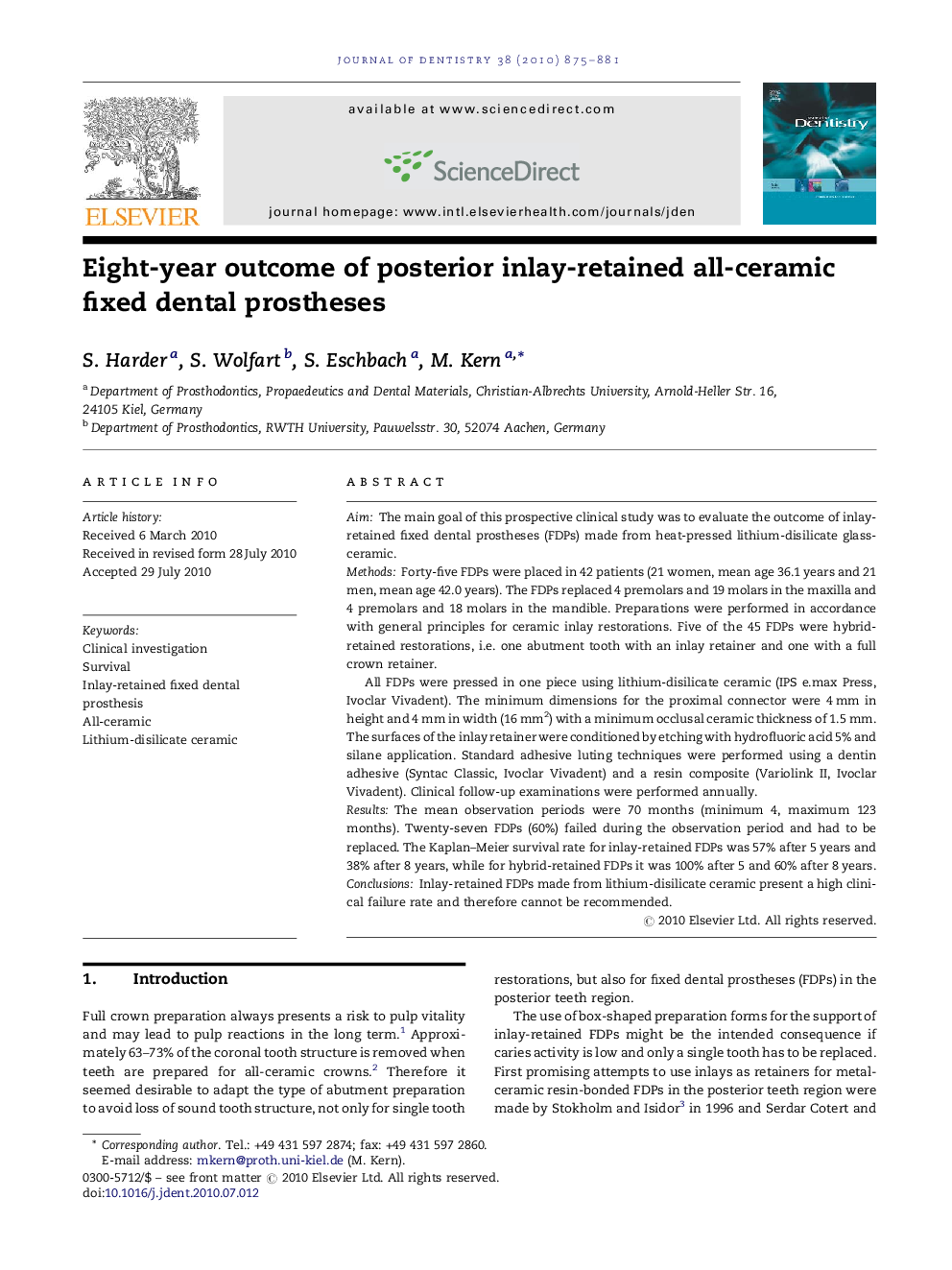| Article ID | Journal | Published Year | Pages | File Type |
|---|---|---|---|---|
| 3146341 | Journal of Dentistry | 2010 | 7 Pages |
AimThe main goal of this prospective clinical study was to evaluate the outcome of inlay-retained fixed dental prostheses (FDPs) made from heat-pressed lithium-disilicate glass-ceramic.MethodsForty-five FDPs were placed in 42 patients (21 women, mean age 36.1 years and 21 men, mean age 42.0 years). The FDPs replaced 4 premolars and 19 molars in the maxilla and 4 premolars and 18 molars in the mandible. Preparations were performed in accordance with general principles for ceramic inlay restorations. Five of the 45 FDPs were hybrid-retained restorations, i.e. one abutment tooth with an inlay retainer and one with a full crown retainer.All FDPs were pressed in one piece using lithium-disilicate ceramic (IPS e.max Press, Ivoclar Vivadent). The minimum dimensions for the proximal connector were 4 mm in height and 4 mm in width (16 mm2) with a minimum occlusal ceramic thickness of 1.5 mm. The surfaces of the inlay retainer were conditioned by etching with hydrofluoric acid 5% and silane application. Standard adhesive luting techniques were performed using a dentin adhesive (Syntac Classic, Ivoclar Vivadent) and a resin composite (Variolink II, Ivoclar Vivadent). Clinical follow-up examinations were performed annually.ResultsThe mean observation periods were 70 months (minimum 4, maximum 123 months). Twenty-seven FDPs (60%) failed during the observation period and had to be replaced. The Kaplan–Meier survival rate for inlay-retained FDPs was 57% after 5 years and 38% after 8 years, while for hybrid-retained FDPs it was 100% after 5 and 60% after 8 years.ConclusionsInlay-retained FDPs made from lithium-disilicate ceramic present a high clinical failure rate and therefore cannot be recommended.
